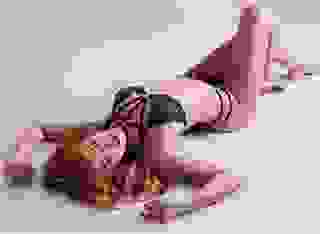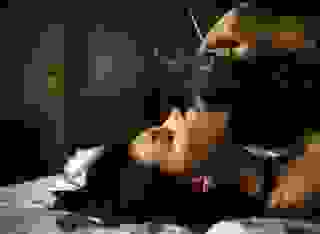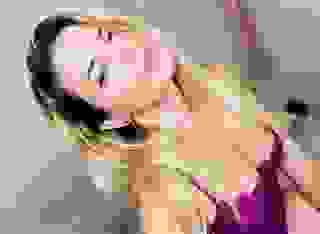- How To
- More on Haiku: Kireji
Note: You can change font size, font face, and turn on dark mode by clicking the "A" icon tab in the Story Info Box.
You can temporarily switch back to a Classic Literotica® experience during our ongoing public Beta testing. Please consider leaving feedback on issues you experience or suggest improvements.
Click hereMore on Haiku: Kireji or "Cutting Words"
In reading and writing haiku, there are many facets to consider, so many in fact that Jane Reichhold in her article "Fragment and Phrase Theory", made the astute comment: "The fact that the smallest literary form - haiku - has the most rules never ceases to amaze and astound." Earlier articles posted here at Literotica discussed many of these rules and facets, however, one of the most important to consider is the kireji or "cutting word". Reichhold thought it so important that she discusses it first in her article:
"First and foremost, and certainly the guideline which I have consciously or unconsciously followed the longest, is the one that a haiku must be divided into two parts. This is the positive side of the rule that haiku should not be a run-on sentence. There needs to be a syntactical break dividing the ku into two parts. From the Japanese language examples this meant that one line (5 onji) was separated from the rest by either grammar or punctuation (in the Japanese an accepted sound-word - kireji - was as if we said or wrote out "dash" or "comma")."
It is through this break that the true beauty of haiku is realized. With the break, or "cut" the reader is forced, through imagination, to relate or reconcile the two parts of the haiku. With effective juxtaposition, the haiku artist can create a significant surprise or provide insight the reader had either not considered before, or had instinctively known all along, but missed in the observation. In fact, some experts consider the true strength of haiku relies upon this cut and juxtaposition:
"Though it can be presented on the page in three lines, a haiku structurally consists of two parts with a pause in between. Its power as poetry derives from the juxtaposition of the two images and the sense of surprise or revelation that the second image produces." (1. pg 3)
In Japanese haiku the cut is created through the use of an actual word, a kireji. Harold G. Henderson detailed a number of kireji in his book An Introduction to Haiku including, for example: ka which is merely a verbal question mark and yo a verbal exclamation mark. Obviously a translation of these words will not yield any equivalent English words. Concurrently, in his article titled "The Disjunctive Dragonfly", Richard Gilbert states:
"Direct imitation of kireji is not linguistically possible for English haiku; however, an application of analogues miming the function of the original is a possibility."
In other words, often in English haiku, actual punctuation is used to create the cut. This is accomplished using a number of different punctuations including:
Ellipsis:
hot afternoon...
only the slap slap
of a jump rope
Anita Virgil (2. pg 241)
Dash:
lone red-winged blackbird
riding a reed in high tide—
billowing clouds
Nicholas Virgilio (2. pg 256)
Semicolon:
I stop to listen;
the cricket
has done the same.
Arizona Zipper (2. pg 327)
Commas and periods are also used as well as simply not using any punctuation and letting the language determine where a natural break would occur:
unpainted porch
fog comes
to a closed door
Jane Reichhold (2. pg 159)
In the above haiku, Reichhold actually helps you with finding the break by indenting the second and third lines, creating the cut between the unpainted porch and the fog.
In reviewing the above haiku, notice how the cut in each one highlights a juxtaposition of two distinct images or concepts. With each one, this juxtaposition is followed with an enlightening surprise or aha! Often you have heard crickets, only to get close and then experience a sudden silence. While you had experienced that before, the haiku offers a wonderful reminder of that experience as you are taken into a field or forest to experience the event through the haiku. Consider each of the above poems and search for the cut and the following enlightenment. This is the pure essence of haiku.
As further explained in "A Message from Hoshino Takashi" "Kireji was introduced so that hokku (former name of haiku) could stand alone in its own right as it had been merely a part of a longer poem called waka and could not do so without kireji. This point is seldom understood. Thus, kireji (18 of them) make haiku complete. They appear in different places of a haiku, depending which kireji you use. Therefore, they also work as if they are a caesura, adding dynamism, depth and more complicated structure to haiku which would otherwise be flat."
Takashi mentions 18 kireji in his recent article, while Henderson had listed 5 in the Appendix to his book which was originally published in 1958. Like the two examples provided above, these kireji are actually verbal punctuation marks in Japanese haiku.
While the cut is important to haiku, care should be taken to avoid overemphasis of the break in the poem. Too much emphasis on a cut will unduly weight a single line, leaving the other lines to fade to appearing as only background for the highlighted line. For example:
On a bare branch
a crow has settled down to roost.
In autumn dusk.
Basho (translated by Carter 1991)
In this translation, the indentation and the period make the second line so obvious it risks unbalancing the overall haiku. Perhaps a better solution would have been to choose one or the other means of creating the cut.
After considering the importance of kireji, perhaps readers will better understand some of the elements that distinguish exemplary haiku, from the mediocre. When reading and writing, haiku enthusiast should savor the wonderful moments of enlightenment a well crafted haiku will product. Most often the wonderful feeling a reader and writer gets in considering an excellent haiku is created through a prodigious us of a kireji or cut. Enjoy:
fresh snow on the mat --
the shape of welcome
still visible
Michael Dylan Welch (2 pg 266)
Footnotes:
1. Gilbert, Richard "The Disjunctict Dragonfly: A Study of Disjunctive Methodology in Contemporary English Haiku" from A World Map: Developments in Haiku, World Haiku Review Vol. 3 Issue 2, December 2003. www. worldhaikureview.org.
2. van den Heuvel, Cor The haiku Anthology Expanded Edition W.W. Norton & company, Inc. New York (1999)
References:
1. Blyth, R.H. Haiku Volume 1 Eastern Culture The Hokuseido Press, Tokyo (1981) Original (1949) by R. H. Blyth.
2. Henderson, Harold G. An Introduction to Haiku, An Anthology of Poems and Poets from Basho to Shiki Doubleday & Company, Inc. Garden City New York (1958).
3. Henderson, Harold G. Haiku in English Charles E. Tuttle C.: Publishers Tokyo, Japan (1967).
4. Higginson, William J. with Harter, Penny The Haiku Handbook, How to Write, Share, and Teach Haiku Kodansha International Tokyo, Japan (1985).
5. Gilbert, Richard "The Disjunctict Dragonfly: A Study of Disjunctive Methodology in Contemporary English Haiku" from A World Map: Developments in Haiku, World Haiku Review Vol. 3 Issue 2, December 2003. www. worldhaikureview.org.
6. Reichhold, Jane "Fragment and Phrase Theory" from www. ahapoetry.com
7. Sutiste, Elin "A Crow On A Bare Branch: A Comparison of Matsuo Basho's Haiku "Kare-eda-ni..." and Its English Translations" in Studia Humaniora Tartuensia No. 2.B.1 (2001).
8. Takashi, Hoshino "A Message from Hoshino Takashi" from Hoshino Takashi's Corner in World Haiku Review. www. worldhaikureview.org.
9. van den Heuvel, Cor The haiku Anthology Expanded Edition W.W. Norton & company, Inc. New York (1999).
- COMMENTS








